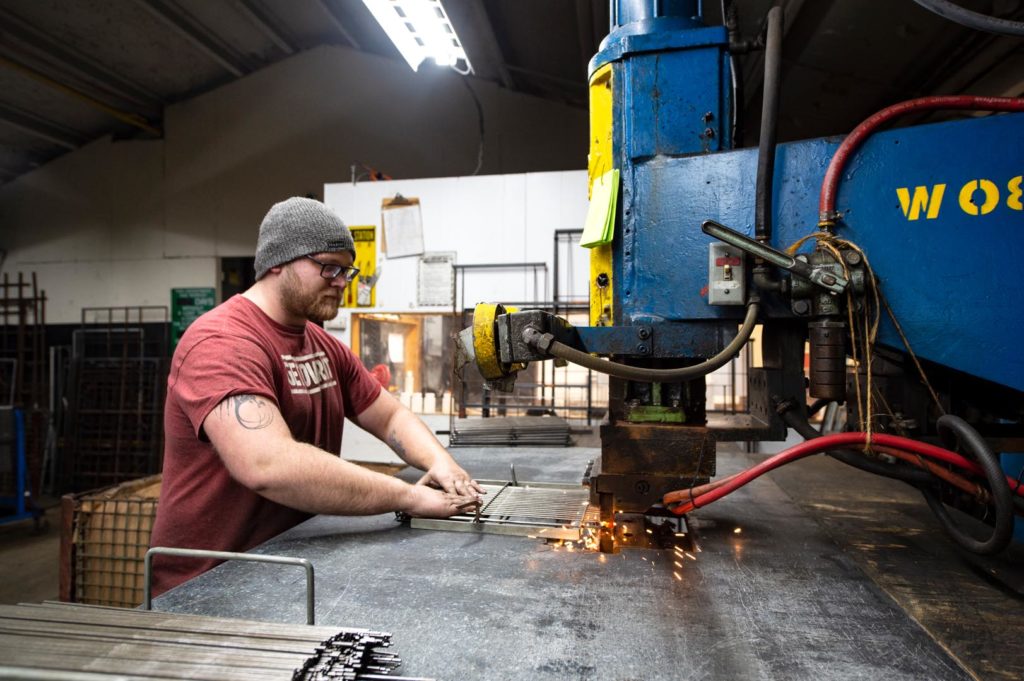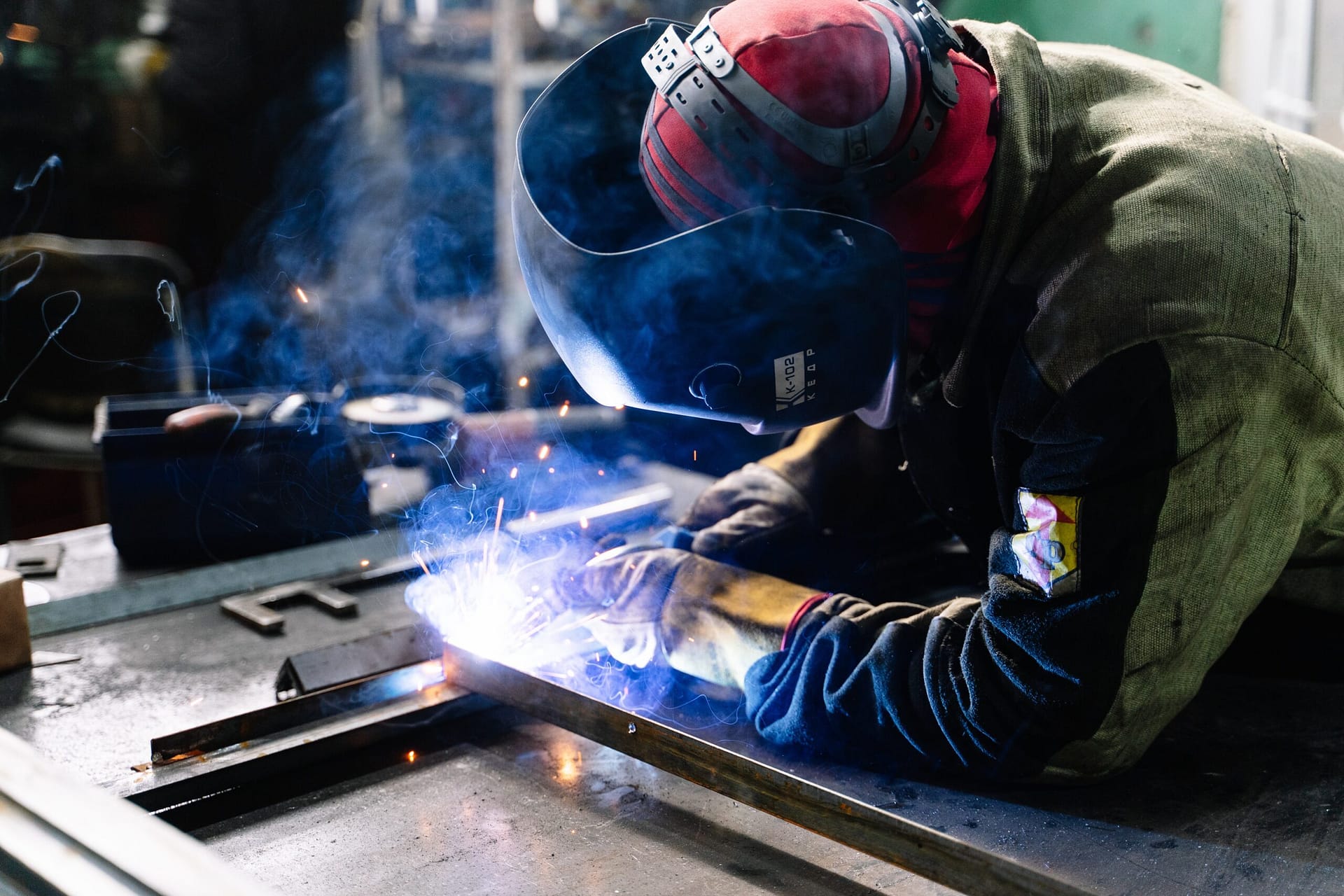Usual Welding Repair Issues and How to Address Them Efficiently
Welding repair work commonly run into a series of concerns that can endanger the honesty of the end product. Common troubles consist of poor penetration, porosity, and imbalance, among others. Each defect provides distinct challenges that call for certain techniques for resolution. Recognizing these issues is essential for welders aiming to boost their outcomes and skills. This conversation will explore these usual welding repair service problems and effective approaches to resolve them.
Poor Penetration
Inadequate infiltration occurs when the weld steel falls short to totally fuse with the base material, leading to weak joints and potential structural failures. This concern often stems from not enough warm input, inaccurate electrode angle, or incorrect welding rate. Welders might encounter poor infiltration as a result of a miscalculation of the needed specifications for a details material density or type. In addition, contamination on the base product's surface area can impede reliable bonding, aggravating the problem. To resolve inadequate infiltration, welders must assure appropriate setups on their tools and preserve a clean job surface area. Normal assessment of welds is suggested to identify any deficiencies early, enabling for prompt adjustments and the prevention of compromised structural integrity in welded settings up.
Porosity
Porosity is a common problem in welded joints that materializes as tiny gas bubbles entraped within the weld steel. This defect can jeopardize the honesty of the weld, leading to lowered strength and prospective failing under stress. Belgrade Fabrication. Porosity commonly develops from contamination, moisture, or improper welding strategies, which allow gases to leave right into the molten weld pool. To resolve porosity, welders need to guarantee proper surface area prep work, maintain a clean workplace, and utilize appropriate welding parameters. In addition, selecting the best filler product and protecting gas can reduce gas entrapment. Routine assessment and screening of welds can help determine porosity early, guaranteeing prompt restorative activities are taken, therefore preserving the top quality and reliability of the welded structure
Imbalance
Misalignment in welding can arise from numerous elements, consisting of inappropriate arrangement and thermal development. Understanding the root causes is necessary for effective resolution. A number of adjustment methods are available to realign parts and ensure structural stability.
Causes of Imbalance
Welding misalignment usually originates from a range of underlying issues that can compromise architectural honesty. One key cause is inappropriate fit-up of elements prior to welding, which can cause spaces and irregular surface areas. Variations in thermal expansion during the welding procedure can additionally lead to distortion, specifically if the materials being signed up with have different coefficients of development. In addition, insufficient fixturing and clamping may fall short to hold components firmly in location, resulting in activity throughout welding. Inadequately kept tools, including welding devices and devices, may introduce incongruities in the weld grain, additional contributing to misalignment. Lastly, operator error, stemming from inadequate training or experience, can likewise play a considerable function in creating misaligned welds.
Modification Strategies Readily Available
Addressing misalignment efficiently needs a mix of restorative methods customized to the certain problems available. One common technique is using jigs or components to hold parts in the proper position during welding, guaranteeing consistent placement. Furthermore, preheating the products can help in reducing distortion and enhance fit-up. For substantial misalignment, mechanical adjustment strategies, such as utilizing hydraulic jacks or clamps, can be utilized to deal with the setting before welding. Post-weld heat therapy might likewise be necessary to eliminate anxieties created by imbalance. Lastly, mindful examination and adjustment throughout the arrangement stage can avoid misalignment problems from becoming considerable troubles, advertising a smoother welding procedure and improving general structural stability.
Distortion
Distortion is an usual difficulty in welding that can arise from numerous variables, consisting of uneven heating & cooling. Recognizing the reasons of distortion is necessary for carrying out effective avoidance strategies. Resolving this problem not just enhances structural integrity however also boosts the overall quality of the weld.
Root causes of Distortion
When based on the extreme heat of welding, products typically go through adjustments that can result in distortion. This sensation primarily develops from thermal expansion and contraction during the welding procedure. As the weld location warms up, the material expands; upon cooling, it gets, which can create internal stresses. On top of that, uneven heating across a workpiece can intensify these tensions, causing bending or flexing. The kind of product likewise plays a substantial function; steels with differing thermal conductivity and coefficients of expansion might respond in different ways, resulting in uncertain distortions. Inadequate joint layout and poor fixturing can add to misalignment during welding, boosting the likelihood of distortion. Comprehending these reasons is necessary for reliable welding repair and prevention methods.
Prevention Techniques
Reliable prevention methods for distortion during welding focus on regulating heat input and making sure correct joint layout. Keeping a consistent heat input helps to lessen thermal development and contraction, which can cause distortion. Utilizing methods such as preheating the work surface can also decrease the temperature gradient, promoting uniform heating. Additionally, picking welding pliers suitable joint styles, such as T-joints or lap joints, can boost security and decrease tension focus. Implementing proper fixturing to secure the workpieces in position further help in preserving placement during the welding procedure. Staggered welding series can disperse heat extra evenly, stopping localized distortion. By using these methods, welders can considerably decrease the possibility of distortion and improve the overall high quality of their welds.
Breaking
Splitting is a common concern run into in welding repair services, usually arising from various aspects such as improper cooling prices, material selection, or inadequate joint preparation. The occurrence of splits can substantially endanger the honesty of the weld, causing possible failings during procedure. To resolve this problem, welders must initially evaluate the origin, making certain that products work and appropriately chosen for the certain application. Furthermore, controlling the cooling rate during the welding procedure is vital; quick cooling can generate stress and cause cracking. Correct joint design and preparation likewise add to decreasing the threat. Implementing these strategies can enhance weld top quality and longevity, inevitably decreasing the likelihood of breaking in finished weldments.

Insufficient Blend
A substantial concern in welding fixings is insufficient combination, which happens when the weld steel does not appropriately bond with the base product or previous weld passes - Montana Mobile Welding and Repair Welding. This problem can cause weak points in the joint, potentially compromising the honesty of the bonded structure. Aspects adding to insufficient blend include not enough heat input, inappropriate welding technique, and contamination of the surface areas being joined. To resolve this issue efficiently, welders need to ensure appropriate pre-weld cleaning and surface preparation, along with change their welding parameters to achieve appropriate infiltration and fusion. Routine assessment throughout the welding procedure can also assist recognize incomplete blend early, allowing for prompt corrective procedures to boost the general high quality of the weld
Overheating
While welding repair services can boost structural stability, overheating offers a considerable obstacle that can result in product destruction. Too much warmth throughout welding can alter the mechanical residential properties of metals, causing minimized strength, enhanced brittleness, and warping. This sensation is particularly essential in high-stress applications where architectural dependability is extremely important. Identifying getting too hot can involve visual evaluations for discoloration or distortion, as well as monitoring temperature throughout the welding procedure. To mitigate the threats linked with getting too hot, welders should use proper techniques, such as managing warmth input, changing traveling speed, and using suitable filler materials. Additionally, executing pre- and post-weld heat therapies can help restore product homes and boost the general top quality of the fixing, guaranteeing long-lasting performance and safety.
Often Asked Inquiries
What Are the Usual Indicators of a Welding Flaw?

Exactly How Can I Evaluate My Welds for Top quality?
To evaluate welds for quality, one can make use of aesthetic examinations, ultrasonic screening, and radiographic approaches. Each strategy guarantees structural stability, determines defects, and verifies adherence to defined requirements, eventually boosting the dependability of the bonded joints.
What Security Safety Measures Should I Take While Welding?
When welding, one must prioritize safety and security by putting on suitable personal protective devices, making sure correct ventilation, securing flammable products away, maintaining a clean work area, and being mindful of surroundings to avoid injuries and crashes.
Can I Fix a Weld Without Redesigning the Entire Joint?
Repairing Resources a weld without renovating the entire joint is feasible, depending upon the damages (Montana Mobile Welding and Repair Belgrade Welding). Techniques such as grinding, including filler product, or utilizing a welding procedure can successfully resolve particular flaws while protecting the surrounding framework
What Tools Are Essential for Effective Welding Services?
Essential tools for effective welding fixings consist of a welding maker, cord brush, mill, protective equipment, clamps, and filler products. Each tool plays a vital role in guaranteeing quality and safety and security throughout the repair service process. Porosity usually arises from contamination, moisture, or incorrect welding techniques, which allow gases to escape into the molten weld swimming pool. Poorly conserved equipment, including welding devices and devices, may present inconsistencies in the weld bead, more contributing to imbalance. When subjected to the extreme warmth of welding, products often undergo adjustments that can lead to distortion. Splitting is an usual issue encountered in welding repairs, usually resulting from numerous factors such as inappropriate air conditioning prices, material option, or insufficient joint prep work. A significant problem in welding repairs is insufficient blend, which happens when the weld steel does not appropriately bond with the base material or previous weld passes.